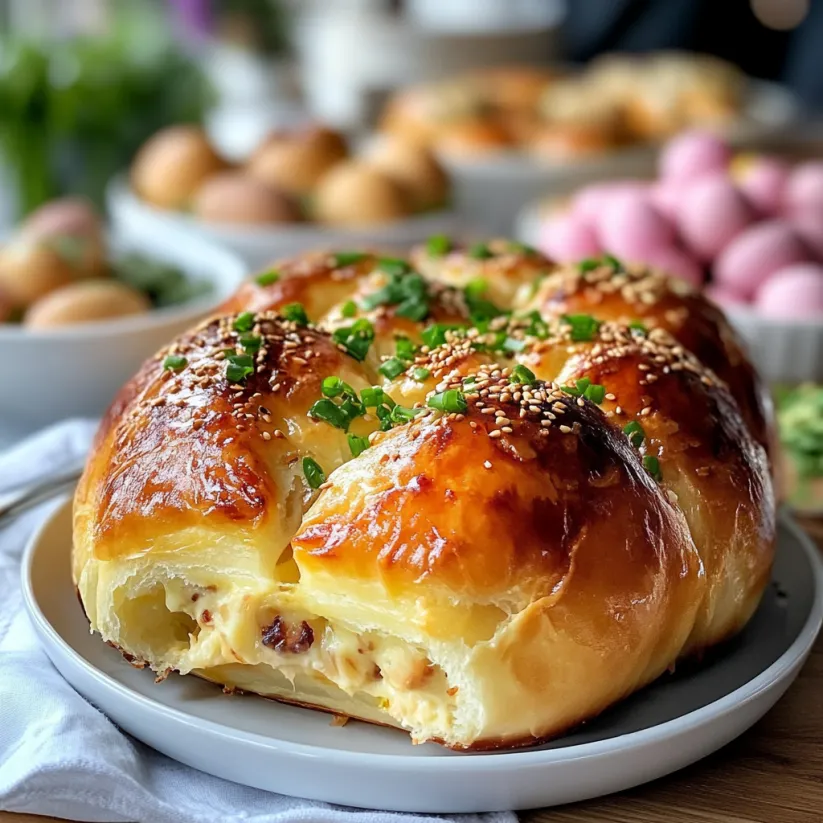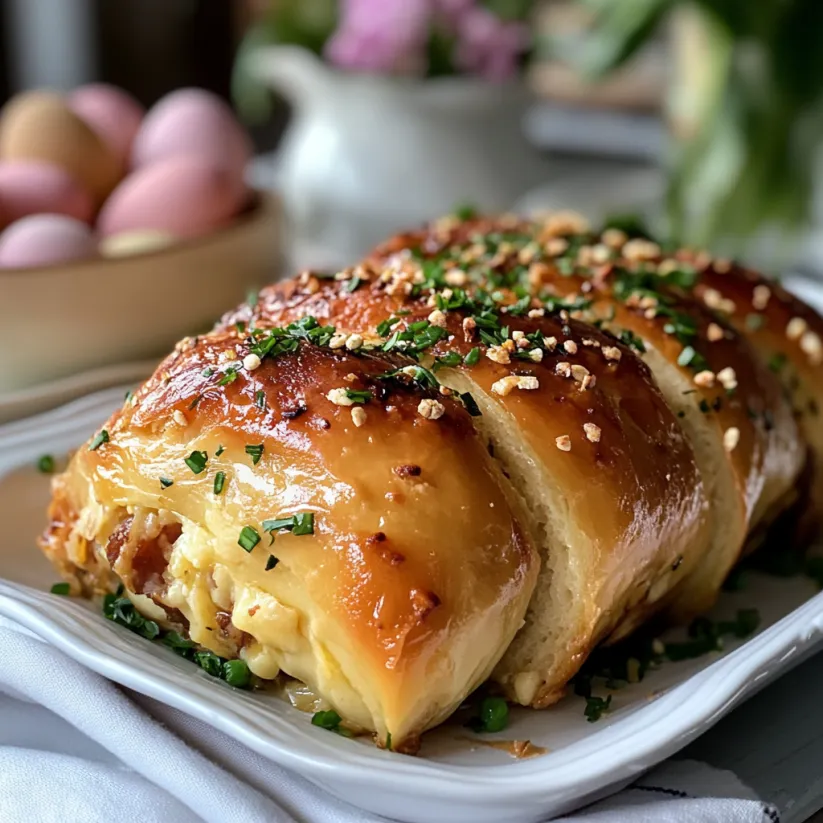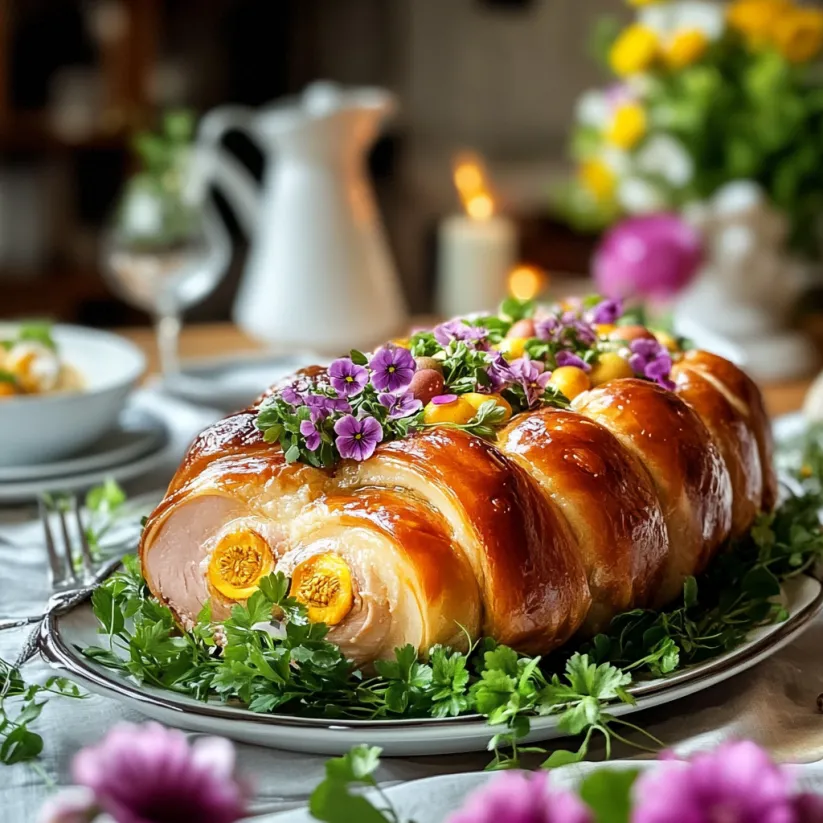 Save Pin
Save Pin
This homemade British Hot Cross Bun recipe has been cherished in my family for generations, originating from a Tudor spiced bun recipe my mother discovered in the 1950s. These fruit-studded, spiced treats are perfect for Easter celebrations but delicious enough to enjoy year-round.
I still remember my mother making these every Easter, filling the house with their unmistakable aroma. Now my own family eagerly anticipates these buns appearing in our kitchen as a signal that spring celebrations have arrived.
Ingredients
- Strong white bread flour gives these buns their perfect structure and chew
- Salt balances the sweetness for an authentic flavor
- Mixed spice and cinnamon create that classic warm Easter bun flavor profile
- Butter adds richness and tenderness to the dough
- Caster sugar provides just the right sweetness without being overwhelming
- Easy-blend dried yeast ensures reliable rising without complexity
- Tepid milk activates the yeast and creates a soft crumb
- Free-range egg enriches the dough for perfect texture
- Mixed dried fruit provides bursts of sweetness throughout each bite
- Cut mixed citrus peel gives that essential traditional zing
- Plain flour for creating those iconic crosses on top
Step-by-Step Instructions
- Create the base dough
- Sieve together flour, salt, mixed spice and cinnamon into a large mixing bowl. Incorporate butter with your fingertips until the mixture resembles breadcrumbs. Form a well in the center, add sugar and yeast. Beat the egg and combine with tepid milk, then pour into the flour well. Mix to form a soft, pliable dough that pulls away from the sides of the bowl.
- Incorporate fruit and first proof
- Turn dough onto a lightly floured surface and carefully work in the dried fruit and citrus peel until evenly distributed. Knead for 5 minutes until smooth and elastic. Shape into a ball, place in a greased bowl, cover with a clean tea towel, and set in a warm place for one hour until doubled in size.
- Second proof
- Gently punch down the risen dough to release air bubbles. Reshape into a ball, return to the bowl, cover again, and allow to rise for another 30 minutes.
- Shape and final proof
- Divide dough into 12 equal pieces and roll each into a ball. Flatten slightly with your palms to form the classic bun shape. Place on greased baking trays with space between each bun. Cover with a tea towel for 5-10 minutes. Place trays inside large oiled plastic bags, tie tightly, and set in a warm place for 40 minutes for the final rise.
- Prepare crosses and glaze
- While buns are rising, mix plain flour with just enough water to create a thick paste that will hold its shape but can be piped. For the glaze, gently heat milk with sugar until dissolved, then set aside.
- Bake to perfection
- Preheat oven to 240°C/220°C Fan. Remove risen buns from plastic bags. Pipe crosses onto each bun. Bake for 15-18 minutes until golden brown and hollow sounding when tapped underneath. Immediately brush with the sugar-milk glaze while hot. Cool on a wire rack.
 Save Pin
Save Pin
The mixed spice blend is what truly makes these buns special to me. My mother always insisted on using a quality blend with cinnamon, nutmeg, allspice and a hint of clove. This aromatic mixture creates that unmistakable scent that instantly transports me back to childhood Easter mornings.
The History Behind Hot Cross Buns
Hot cross buns have a fascinating history dating back to at least the 12th century. The cross symbolizes the crucifixion of Jesus, making them traditionally eaten on Good Friday in the United Kingdom. During Tudor times, Queen Elizabeth I actually restricted their sale to special occasions like Easter and Christmas, viewing them as too sacred for everyday consumption. Today they appear in bakeries months before Easter, but nothing compares to a homemade version with its superior texture and freshness.
Serving Suggestions
For the ultimate experience, serve these buns slightly warm with a generous spread of good quality salted butter. For a more indulgent treat, try them with cream cheese and a thin layer of orange marmalade. They also make excellent bread pudding if you have any leftovers that have gone slightly stale. For a traditional English afternoon tea, serve alongside other Easter treats like simnel cake and cucumber sandwiches.
Troubleshooting Tips
If your dough seems too sticky after mixing, resist adding too much extra flour as this can make the buns tough. Instead, use lightly oiled hands to handle the dough. The warmth of your kitchen greatly affects rising time. On cold days, create a warm environment by placing the covered dough near a preheating oven. Make sure your dried fruit is fresh and soft. If it seems too dry, soak it in hot tea or orange juice for 15 minutes before draining well and adding to the dough.
 Save Pin
Save Pin
Commonly Asked Questions
- → Can I make hot cross buns in a bread machine?
Yes, you can use a bread machine for the initial stages. Start the dough in the machine up to the second proving stage. Add the dried fruit about 5 minutes before the end of the kneading cycle or when your bread machine signals with a beep. You'll need to shape the buns and complete the final proving and baking steps manually.
- → How should hot cross buns be served?
Hot cross buns are traditionally served either warm and fresh from the oven or toasted. Split them in half and spread generously with good quality salted butter. They're perfect for breakfast or afternoon tea, especially during the Easter season.
- → Can hot cross buns be frozen?
Yes, hot cross buns freeze exceptionally well for up to 3 months. Allow approximately 6 hours for them to defrost at room temperature before serving. Alternatively, use the defrost setting on your toaster to toast them directly from frozen.
- → What are the key spices in traditional hot cross buns?
Traditional British hot cross buns typically feature mixed spice (a blend of cinnamon, nutmeg, allspice, and cloves) and additional cinnamon. These warming spices are essential for the distinctive aromatic flavor that characterizes authentic hot cross buns.
- → What makes the crosses on hot cross buns?
The crosses are made from a simple paste of plain flour and water mixed to a consistency that's stiff enough to hold its shape but thin enough to pipe. This mixture is piped onto the buns in cross patterns just before baking.
- → Why do hot cross buns need a glaze?
The sugar and milk glaze applied immediately after baking gives hot cross buns their characteristic shiny appearance and adds a subtle sweetness to the crust. This traditional finishing touch also helps to keep the buns moist and extends their shelf life slightly.
